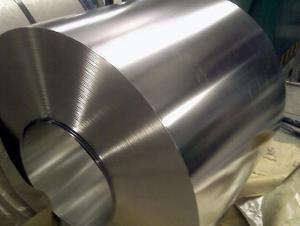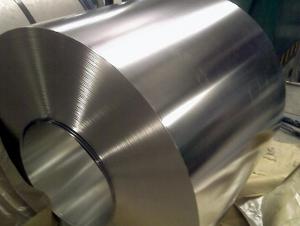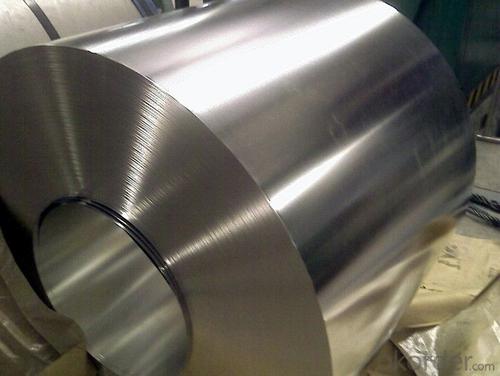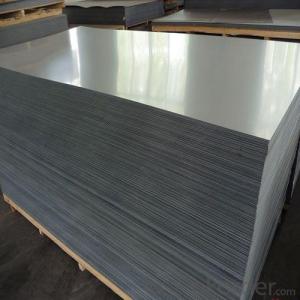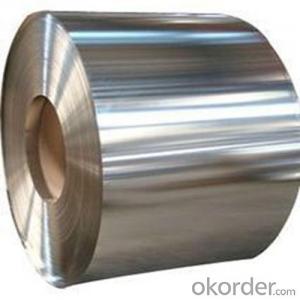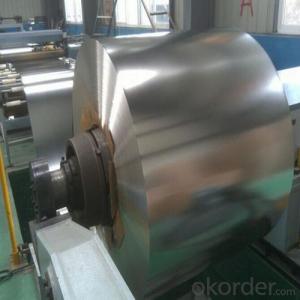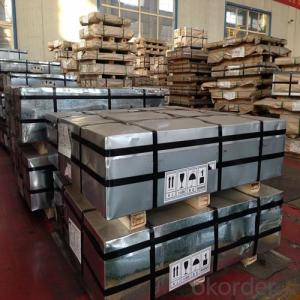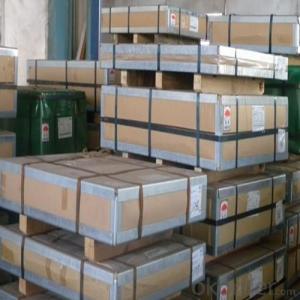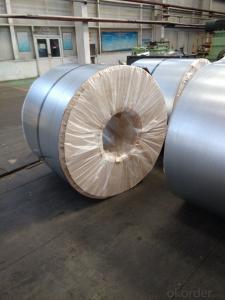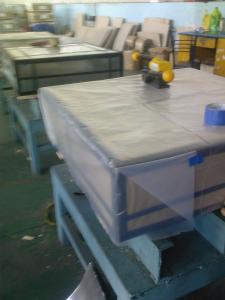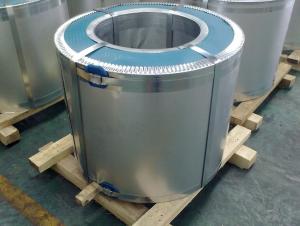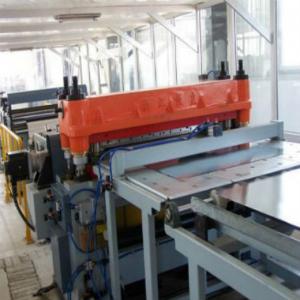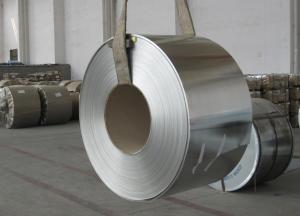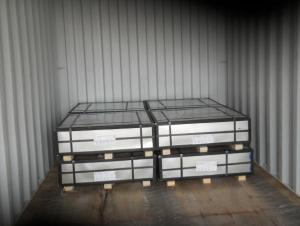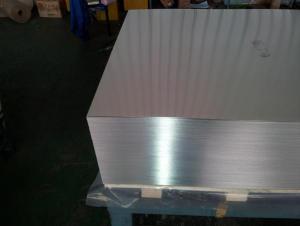Prime Electrolytic Prime Tinplate for Food Packaging (Manufacturer)
- Loading Port:
- China Main Port
- Payment Terms:
- TT or LC
- Min Order Qty:
- 25 m.t
- Supply Capability:
- 30000 m.t/month
OKorder Service Pledge
OKorder Financial Service
You Might Also Like
1.Structure of Prime Electrolytic Prime Tinplate for Food Packaging (Manufacturer) Description
Due to Tinplate packaging`s good seal, nature, dark, robustness and unique decorative metal charm, it has a wide range of coverage in the packaging container industry,and common international packaging varieties. With a variety of CC tinplate material, DR materials, chrome plated and constantly enrich and promotion and development of packaging products and technology, tinplate packaging has promoted with innovation.
Because of its strong antioxidant and diverse styles, beautifully printed, tinplate containers are very popular and loved by customers, and they are widely used in food packaging, pharmaceutical packaging, commodity packaging, instrumentation, packaging, industrial packaging and so on.
Tinplate packaging has high strength, good formability, and many advantages, such as its compatibility in the international market. Therefore, tinplate packaging container is the largest amount of sheet metal packaging in the world.
2.Main Features of the Prime Electrolytic Prime Tinplate for Food Packaging (Manufacturer)
Appearance – Electrolytic Tin Plate is characterized by its beautiful metallic luster. Products with various kinds of surface roughness are produced by selecting the surface finish of the substrate steel sheet.
Paintability and printability – Electrolytic Tin Plates have excellent paintability and printability. Printing is beautifully finished using various lacquers and inks.
Formability and strength – Electrolytic Tin Plates have got very good formability and strength. By selecting a proper temper grade, appropriate formability is obtained for different applications as well as the required strength after forming.
Corrosion resistance – Tinplate has got good corrosion resistance. By selecting a proper coating weight, appropriate corrosion resistance is obtained against container contents. Coated items should meet 24 hour 5 % salt spray requirement.
Solderability and weldability – Electrolytic Tin Plates can be joined both by soldering or welding. These properties of tinplate are used for making various types of cans.
Hygienic – Tin coating provides good and non toxic barrier properties to protect food products from impurities, bacteria, moisture, light and odours.
Safe – Tinplate being low weight and high strength makes food cans easy to ship and transport.
Eco friendly – Tinplate offers 100 % recyclability.
Tin is not good for low temperature applications since it changes structure and loses adhesion when exposed to temperatures below – 40 deg C.
3.Prime Electrolytic Prime Tinplate for Food Packaging (Manufacturer) Images

4.Prime Electrolytic Prime Tinplate for Food Packaging (Manufacturer) Specification
Standard | ISO 11949 -1995, GB/T2520-2000,JIS G3303,ASTM A623, BS EN 10202
|
Material | MR,SPCC |
Thickness | 0.15mm - 0.50mm |
Width | 600mm -1150mm |
Temper | T1-T5 |
Annealing | BA & CA |
Coil Inner Diameter | 508mm |
Weight | 6-10 tons/coil 1~1.7 tons/sheets bundle |
Passivation | 311 |
Oil | DOS |
Surface | Finish,bright,stone,matte,silver |
5.FAQ of Prime Electrolytic Prime Tinplate for Food Packaging (Manufacturer)
- How are the Electrolytic Tin Plates specified?
The Electrolytic Tin Plates are specified as per the steel base, extent of tempering, the coating weight, annealing method and the surface finish.
- How many types there are for base steels?
The base steels are of three types: Type MR, L, D
-What your tinplate material is used for ?
Tinplate is widely used for the packaging of products. Such as food cans,
beverage cans, pet cans, closures, general line cans and so on.
Printed Tinplate is offered!!
-How to place .an order or contact you ?
Please send us Email. we will give you a quick response in seconds .
- How is your quality ?
All our quality is prime even the secondary quality . We have many years experience
In this field with serious quality control standard . Advanced equipment, We welcome your visit to our factory .
- Q: How does tinplate contribute to the overall sustainability of packaging?
- Tinplate contributes to the overall sustainability of packaging in several ways. Firstly, tinplate is highly recyclable, meaning that it can be reused and repurposed indefinitely without losing its quality. This reduces the demand for virgin materials and minimizes the environmental impact of packaging production. Additionally, tinplate has excellent barrier properties, which helps protect the contents of the packaging from spoilage, extending their shelf life and reducing food waste. Furthermore, tinplate is lightweight yet durable, allowing for efficient transportation and reducing carbon emissions associated with logistics. Finally, tinplate has a long lifespan and can be reused in various forms, making it a more sustainable choice compared to other packaging materials.
- Q: What are the main factors influencing the price of tinplate?
- The main factors influencing the price of tinplate include demand and supply dynamics, changes in raw material costs, global economic conditions, trade policies and tariffs, technological advancements in production processes, and environmental regulations affecting the industry.
- Q: What are the main applications of tinplate in the toy industry?
- Tinplate is commonly used in the toy industry for various purposes, such as manufacturing toy cars, trains, and other metal-based toys. Its main applications include providing a durable and corrosion-resistant coating, allowing for intricate and detailed designs, and creating a nostalgic and vintage feel to the toys. Additionally, tinplate is often used for packaging purposes, ensuring the safety and protection of toys during transportation and storage.
- Q: Can tinplate be used for jewelry and accessories?
- Yes, tinplate can be used for jewelry and accessories. Tinplate is a versatile material that can be easily shaped, engraved, and decorated, making it suitable for creating various types of jewelry and accessories. It is durable, lightweight, and has a metallic appearance, making it an attractive choice for designers and consumers alike. Additionally, tinplate is affordable and readily available, making it a viable option for jewelry and accessory manufacturers.
- Q: What are the main challenges in tinplate coating thickness control?
- One of the main challenges in tinplate coating thickness control is achieving uniformity across the entire surface of the tinplate. The coating thickness must be consistent and within the desired range to ensure proper protection and functionality of the tinplate. Additionally, controlling the coating thickness requires precise measurement and monitoring techniques as well as the ability to adjust the coating process parameters in real-time to account for any variations or deviations. Another challenge is ensuring the adhesion of the coating to the tinplate surface, as poor adhesion can lead to coating defects and reduced performance. Lastly, controlling the coating thickness while maintaining cost-effectiveness can be a challenge, as it requires optimizing the coating process to minimize material waste and reduce production costs.
- Q: Who can tell me how to adjust the roller seal defects?
- In the sealing device, the roll sealing roller, the upper pressure head tray, usually referred to as sealing three elements. The correct groove shape of the roller, the reasonable position of the head and the proper driving force of the tray support are the necessary conditions to ensure the normal roll sealing. (see Fig. 1) it is easy to see that the three elements of the seal are the basic components of the sealing device and are also a fundamental factor affecting the double hemming.
- Q: Raw material for zinc clad sheet? Can zinc clad plate replace tinplate?
- Zinc is very active, outdoor corrosion is the surface after the formation of Zinc Oxide, do you dare to drink drinks containing Zinc Oxide, you see, you can replace the tinplate?
- Q: What are the main applications of tinplate in the automotive industry?
- Tinplate is primarily used in the automotive industry for various applications such as fuel tanks, oil filters, exhaust systems, and engine components. Its corrosion-resistant properties, along with its ability to withstand high temperatures, make it an ideal choice for these critical automotive parts. Additionally, tinplate's formability and ability to be easily welded and coated further contribute to its widespread use in the automotive sector.
- Q: What are the main applications of tinplate in the beverage industry?
- Tinplate is widely used in the beverage industry for packaging purposes. It is primarily utilized for manufacturing cans and lids, ensuring the preservation and freshness of various beverages such as carbonated drinks, beer, fruit juices, and canned foods. Tinplate's ability to provide a protective barrier against moisture, light, and air, along with its exceptional resistance to corrosion, makes it an ideal choice for maintaining the quality and shelf life of beverages. Additionally, tinplate cans are lightweight, easy to stack and transport, and can be printed with attractive designs, making them popular for marketing and branding purposes in the beverage industry.
- Q: How does tinplate contribute to the shelf life of beverages?
- Tinplate contributes to the shelf life of beverages by providing a protective barrier against light, oxygen, and moisture, which helps to prevent oxidation and spoilage. This ensures that the beverage retains its quality, taste, and freshness for a longer period of time. Additionally, tinplate cans also have excellent sealing properties, further reducing the risk of contamination and extending the shelf life of beverages.
Send your message to us
Prime Electrolytic Prime Tinplate for Food Packaging (Manufacturer)
- Loading Port:
- China Main Port
- Payment Terms:
- TT or LC
- Min Order Qty:
- 25 m.t
- Supply Capability:
- 30000 m.t/month
OKorder Service Pledge
OKorder Financial Service
Similar products
Hot products
Hot Searches
Related keywords
